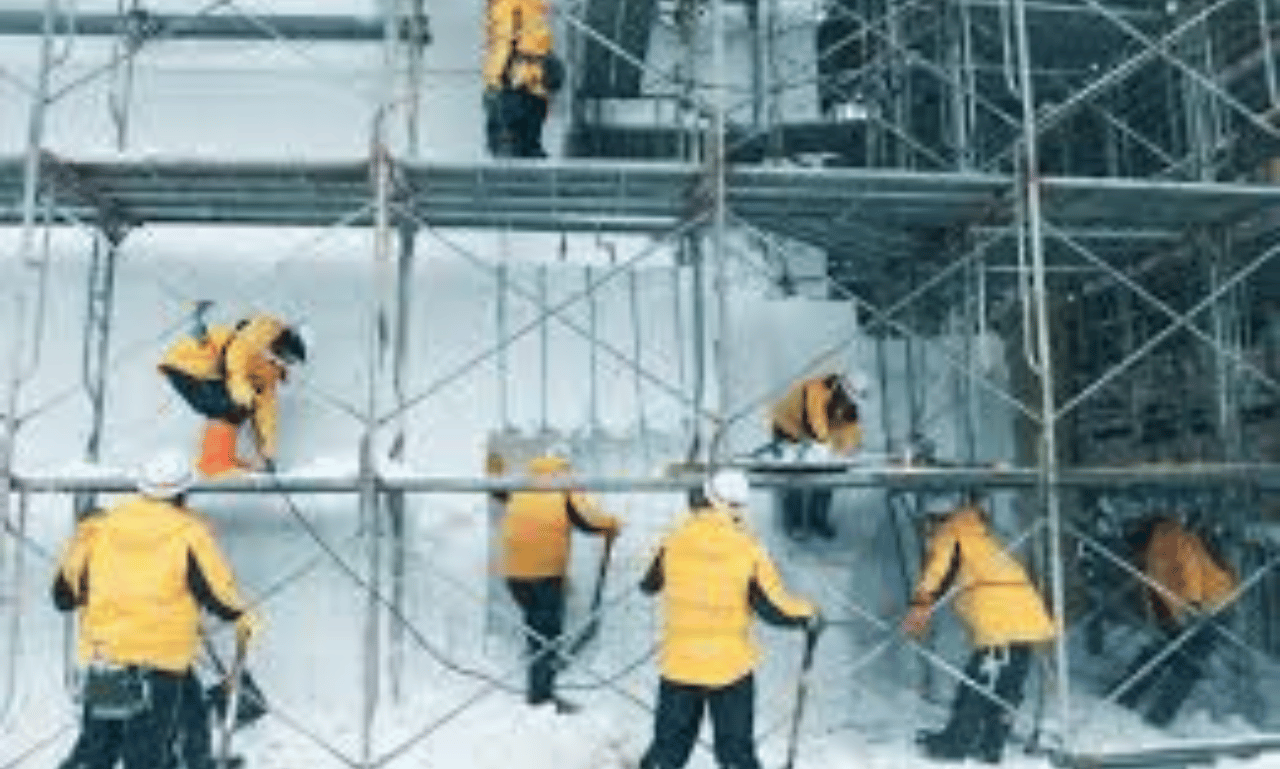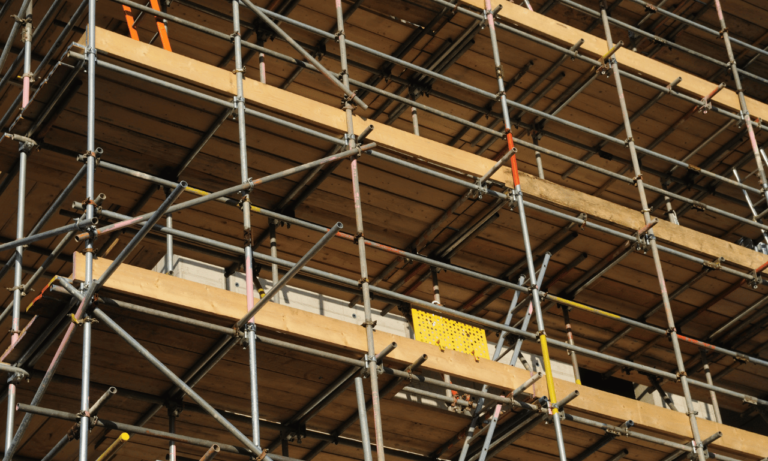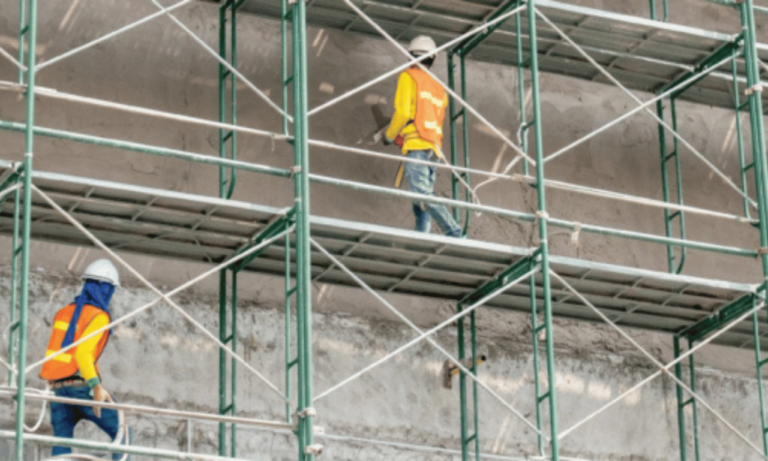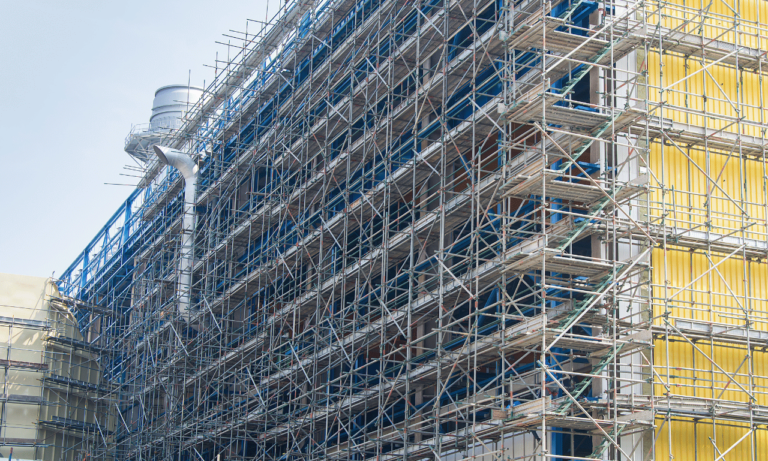Phone:
(+65)8319-0742
Winter conditions can pose unique challenges when working with scaffolding equipment. However, with proper preparation and safety measures, it is possible to ensure stability and protection against icy conditions. This article provides essential tips and solutions for snow scaffolding during the winter season. These tips include regular inspections, anti-slip measures, monitoring the weather, de-icing and snow removal, proper attire and personal protective equipment (PPE), and the importance of lighting and communication & training.
Key Takeaways:
- Regular inspections help identify and address potential issues with winter scaffolding systems.
- Implementing anti-slip measures on scaffolding platforms and walkways ensures better traction in snowy and icy conditions.
- Monitoring the weather and adjusting work schedules prioritize safety and stability.
- Adequate de-icing and prompt snow removal prevent hazards and maintain scaffolding stability.
- Providing workers with proper attire, adequate lighting, and effective communication ensures their safety and enhances productivity during winter scaffolding projects.
Regular Inspections for Winter Scaffolding Safety
Before winter arrives, it is crucial to conduct thorough inspections of your scaffolding systems. Regular inspections ensure that the scaffolding remains strong and secure, mitigating the risks associated with harsh weather conditions. During these inspections, pay close attention to signs of wear, rust, or weak spots that could compromise the stability of the scaffolding in winter.
By identifying and addressing potential issues early on, you can prevent accidents and ensure the scaffolding’s ability to withstand the challenges posed by winter weather. Take into consideration factors such as snow load capacity to gauge the scaffolding’s ability to support the added weight of snow accumulation.
Remember, even minor structural weaknesses can become major safety hazards when exposed to the freezing temperatures and heavy loads that winter brings. Inspections are a proactive measure that allows you to address any vulnerabilities before they escalate into more significant problems.
To ensure the effectiveness of inspections, follow a comprehensive checklist that covers all aspects of winter scaffolding safety. Pay attention to key areas, such as joints, connections, and anchoring points. Inspect the integrity of the platforms, guardrails, and access points, ensuring they are free from damage. Document any findings and promptly take corrective actions to maintain the scaffolding’s safety and reliability.
Remember, regular inspections are a vital part of proactive maintenance and risk management. By investing time and effort in inspecting your scaffolding systems before winter, you can have peace of mind knowing that you’ve taken the necessary steps to ensure a safe working environment.
Benefits of Regular Inspections:
- Identify signs of wear, rust, or weak spots early on
- Mitigate risks associated with harsh winter weather
- Prevent accidents and injuries
- Ensure scaffolding’s ability to withstand snow load capacity
- Maintain stability and structural integrity
Inspection Checklist for Winter Scaffolding Safety:
| Areas to Inspect | Key Considerations |
|---|---|
| Platforms and Walkways | Ensure they are structurally sound and free from damage |
| Guardrails and Edge Protection | Check for stability and make sure they are properly secured |
| Anchoring and Fastening | Inspect connections and joints for stability and strength |
| Weather Protection Systems | Ensure covers and enclosures are in place and in good condition |
| Access Points and Ladders | Check for damage and ensure they provide safe and secure passage |
By following this checklist and conducting regular inspections, you can enhance winter scaffolding safety, protect workers’ well-being, and maintain productivity even in challenging weather conditions.
Anti-Slip Measures for Snowy and Icy Conditions
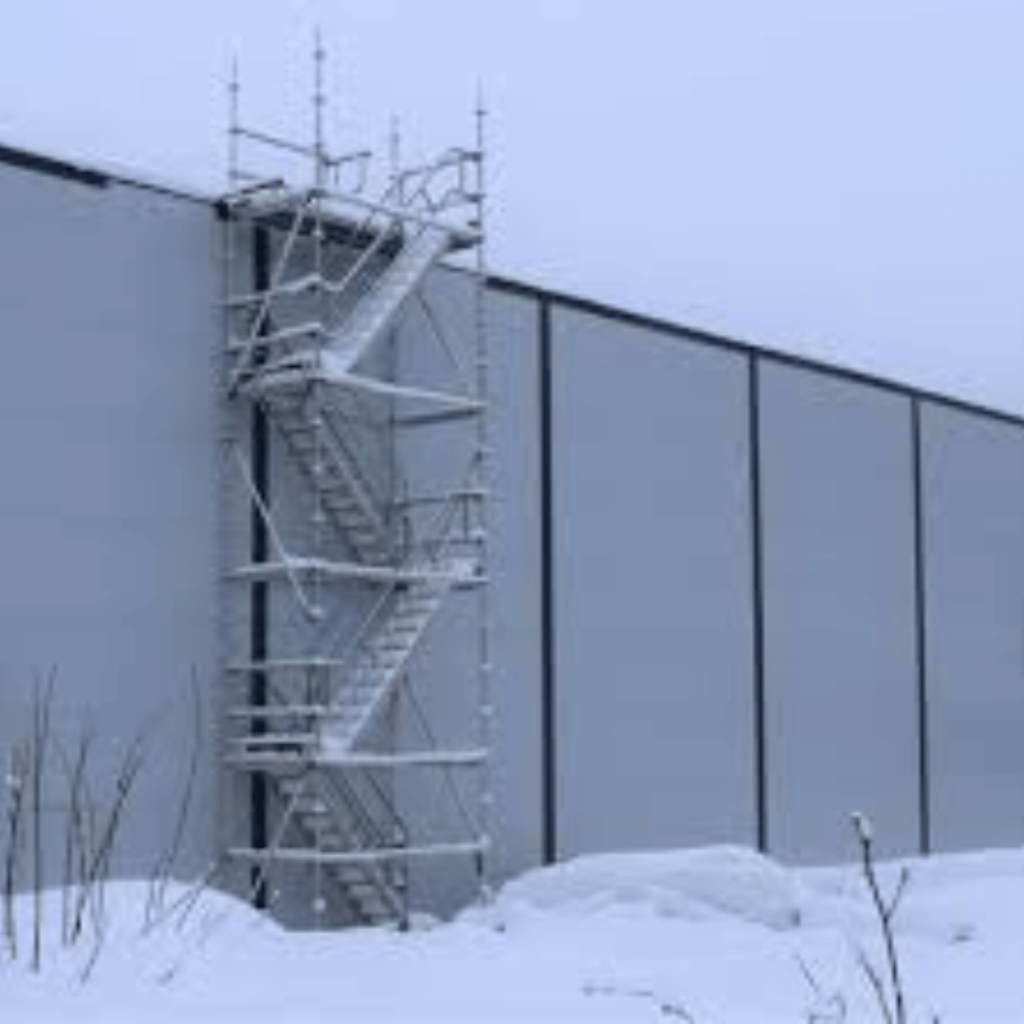
The slippery surfaces caused by snow and ice pose a significant safety risk when working on scaffolding. Implementing anti-slip measures is essential to prevent accidents and falls. By utilizing anti-slip materials on the platforms and walkways of the scaffolds, workers can have better traction and a solid footing, even in icy conditions.
Choosing the Right Anti-Slip Materials
When selecting anti-slip materials for scaffolding, it’s important to consider their effectiveness in icy conditions. Look for materials specifically designed to withstand freezing temperatures and provide traction even when covered in snow. These materials can include:
- Anti-slip tapes: These adhesive tapes have a textured surface that enhances grip.
- Anti-slip coatings: These coatings can be applied to the scaffolding surfaces to create a slip-resistant finish.
- Anti-slip mats: These mats can be placed on walkways and platforms to provide a secure footing.
By incorporating these anti-slip materials into your scaffolding systems, you can significantly reduce the risk of accidents caused by slippery surfaces.
Enhancing Grip with Accessories
In addition to using anti-slip materials, consider adding accessories that further enhance grip on scaffolding. These accessories can provide an extra layer of protection in icy conditions, similar to adding extra traction to shoes. Some options to consider include:
- Traction cleats: These are wearable attachments that can be strapped onto footwear to provide additional grip.
- Handrail grips: Attaching grips to handrails can improve stability and grip while navigating the scaffolding.
- Toe guards: Toe guards can help prevent slips caused by snow accumulation in shoes.
By implementing these additional accessories, you can ensure that workers have a secure footing and reduced risk of accidents, even in challenging and icy conditions.
By using anti-slip materials and accessories, you can enhance the safety of your scaffolding in snowy and icy conditions. These measures provide workers with a solid footing, reducing the risk of slips, falls, and accidents. Prioritizing safety by investing in snow protection systems and implementing proper anti-slip measures ensures a secure working environment, even when faced with severe winter weather.
Monitoring the Weather and Adjusting Work Schedules
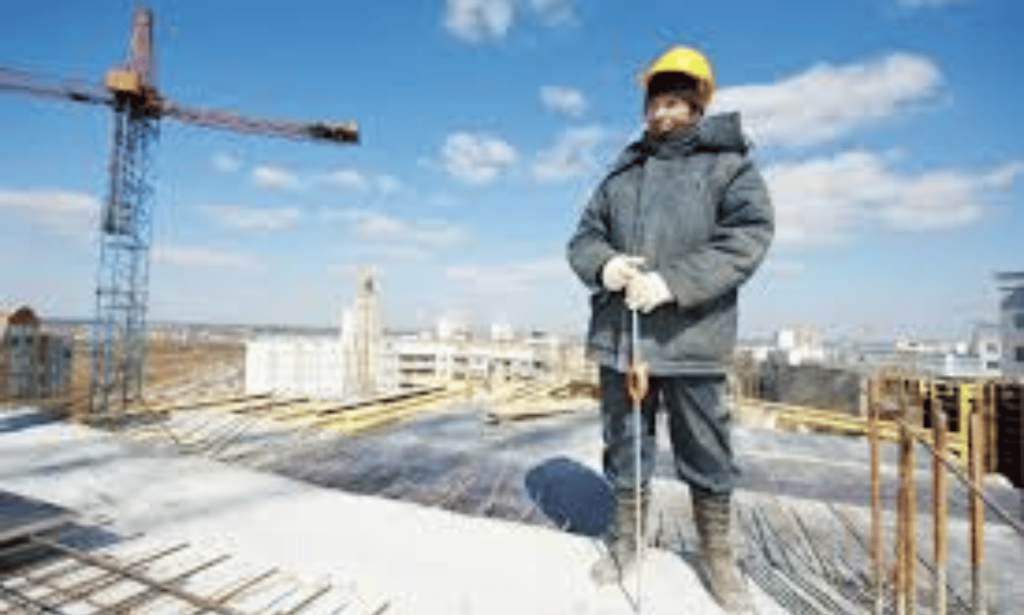
Winter weather conditions can significantly impact the stability of scaffolding structures. To ensure the safety of workers and the integrity of the scaffolding, it is crucial to monitor the weather and adjust work schedules accordingly.
Extreme cold, heavy snowfall, or icy conditions can pose risks to scaffolding stability. By staying vigilant about weather forecasts, you can take proactive measures to mitigate potential hazards. If severe weather conditions are expected, it is advisable to consider suspending work until conditions improve.
Another option is to lower the scaffolding heights if it is safe to do so. Lowering the scaffolding reduces the risk of structural instability and minimizes exposure to the harsh weather elements. This adjustment helps safeguard workers and prevents accidents that could result from unpredictable winter weather conditions.
By closely monitoring the weather, you can prioritize worker safety and make informed decisions regarding work schedules. Winter weather conditions can change rapidly, so staying up to date with forecasts is essential for maintaining a safe working environment. Adjusting work schedules to avoid working during extreme weather events reduces the risk of accidents and ensures the well-being of the workers.
De-Icing and Snow Removal for Snow Scaffolding Safety
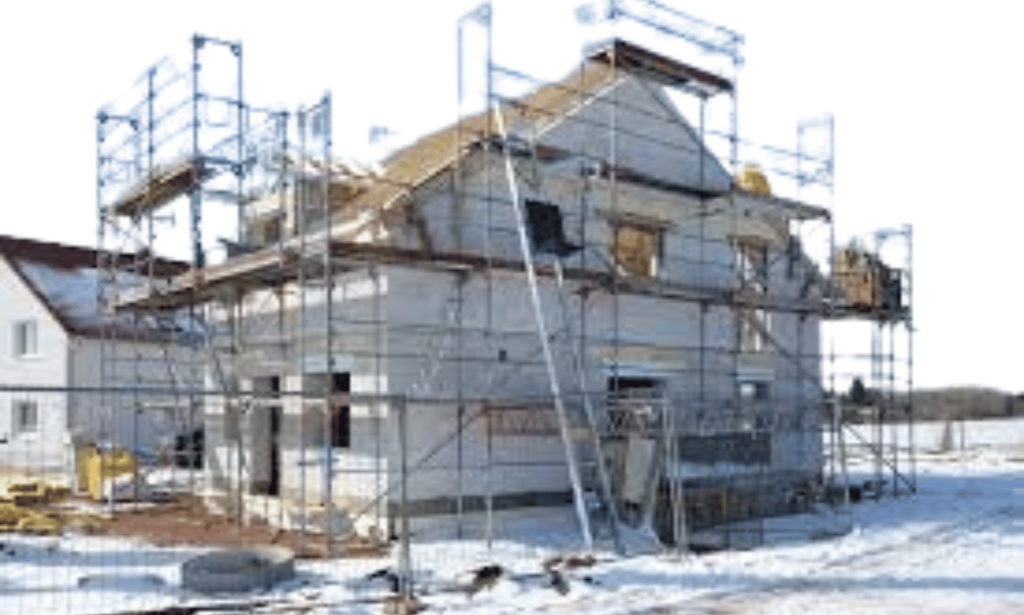
To maintain the safety and stability of snow scaffolding during winter, it is essential to implement effective de-icing strategies and promptly remove accumulated snow. Snow and ice can add weight to the structure, potentially weakening it and increasing the risk of accidents or collapse. Here are some key steps to ensure the safety of snow scaffolding:
1. De-Icing Strategy
A well-planned de-icing strategy is crucial to prevent ice formation on the scaffolding. Using appropriate de-icing materials, such as ice melt or calcium chloride, can help melt ice and prevent its accumulation. Apply the de-icing agents before any significant snowfall or freezing conditions to maintain safe scaffolding surfaces.
2. Prompt Snow Removal
Removing snow from scaffolding is vital to prevent additional weight that can compromise its stability. Utilize suitable tools like snow shovels to clear the snow from walkways, platforms, and access points. Regular snow removal will help maintain clear pathways and ensure safe movement for workers on the scaffolding. In cases where the accumulation is substantial, consider the efficiency and convenience of snow equipment rental to expedite the removal process.
3. Clearing Obstructions
In addition to removing snow, it’s important to clear any obstructions or debris that may hinder the safe use of the scaffolding. Check for ice dams, icicles, or any other hazards that could compromise the stability or integrity of the snow scaffolding. Regular inspections and maintenance will help identify and address potential issues promptly.
4. Anti-Icing Measures
Implementing anti-icing measures can help prevent the formation of ice on the scaffolding. This can include applying anti-icing sprays or coatings to the structure, which create a barrier and prevent ice from adhering. Anti-icing measures reduce the need for frequent de-icing and provide an additional layer of protection against icy conditions.
5. Safety Training and Communication
Ensure that all workers are properly trained on winter scaffolding safety protocols. Emphasize the importance of identifying and reporting any hazards related to ice or snow accumulation. Encourage open communication and provide a reporting system for any safety concerns. Clear communication and regular training sessions foster a culture of safety on snow scaffolding sites.
By implementing a comprehensive de-icing strategy, promptly removing snow, and prioritizing safety measures, you can ensure the stability and integrity of snow scaffolding in winter conditions. Safeguarding workers and preventing accidents is of utmost importance, and following these steps will help maintain a safe working environment.
Proper Attire, Lighting, and Communication in Winter Scaffolding
In winter conditions, it is crucial for workers to prioritize safety by wearing appropriate attire and personal protective equipment (PPE). Thermal clothing, waterproof jackets, insulated gloves, and anti-slip footwear not only shield against cold temperatures but also ensure enhanced worker safety during winter scaffolding projects. By investing in quality winter scaffolding attire, workers can remain comfortable and protected throughout their tasks.
Adequate lighting is essential, especially since winter days have shorter daylight hours. By implementing reliable lighting solutions, workers can maintain clear visibility, reducing the risk of accidents and ensuring efficient work progress. Well-lit scaffolding areas contribute to a safer working environment for everyone involved.
Effective communication and regular training sessions are critical for winter scaffolding operations. Clear protocols and emergency procedures must be conveyed to all workers to ensure everyone understands and follows the specific safety measures for winter conditions. **Training**, **communication**, and **ongoing education** create a culture of safety and preparedness, reducing the chances of accidents and injuries.
Moreover, fall prevention measures like harnesses and anchors are integral to maintaining worker safety during winter scaffolding. These safety tools provide an additional layer of protection, mitigating the risks associated with working at height and ensuring a secure working environment.
FAQ
Why are regular inspections important for winter scaffolding safety?
Regular inspections help identify and address potential issues early on, ensuring the scaffolding remains strong and secure during harsh winter weather conditions. It allows for the detection of signs of wear, rust, or weak spots that could pose safety risks.
How do anti-slip measures help in snowy and icy conditions?
Implementing anti-slip measures, such as using anti-slip materials and accessories, enhances traction on the platforms and walkways of the scaffolds. This helps provide workers with a solid and secure footing, reducing the risk of accidents and falls.
Why is it important to monitor the weather and adjust work schedules?
Monitoring the weather helps prioritize safety on the scaffolding. By staying vigilant about weather forecasts, work schedules can be adjusted accordingly, such as suspending work or lowering the scaffolding heights to mitigate potential risks presented by severe weather conditions, ensuring worker safety.
How does de-icing and snow removal contribute to snow scaffolding safety?
De-icing and prompt snow removal are essential to prevent hazards on scaffolding. Snow and ice can add weight and weaken the structure. Utilizing appropriate tools and equipment, such as snow shovels or snow equipment rental, ensures clear walkways and access points, maintaining the stability of the scaffolding.
What attire and safety equipment should workers have during winter scaffolding?
Workers should be equipped with thermal clothing, waterproof jackets, insulated gloves, and anti-slip footwear to protect against cold temperatures and ensure their safety. Adequate lighting is also crucial, especially during winter’s shorter daylight hours. Effective communication and regular training sessions help everyone understand winter-specific safety protocols and emergency procedures.

